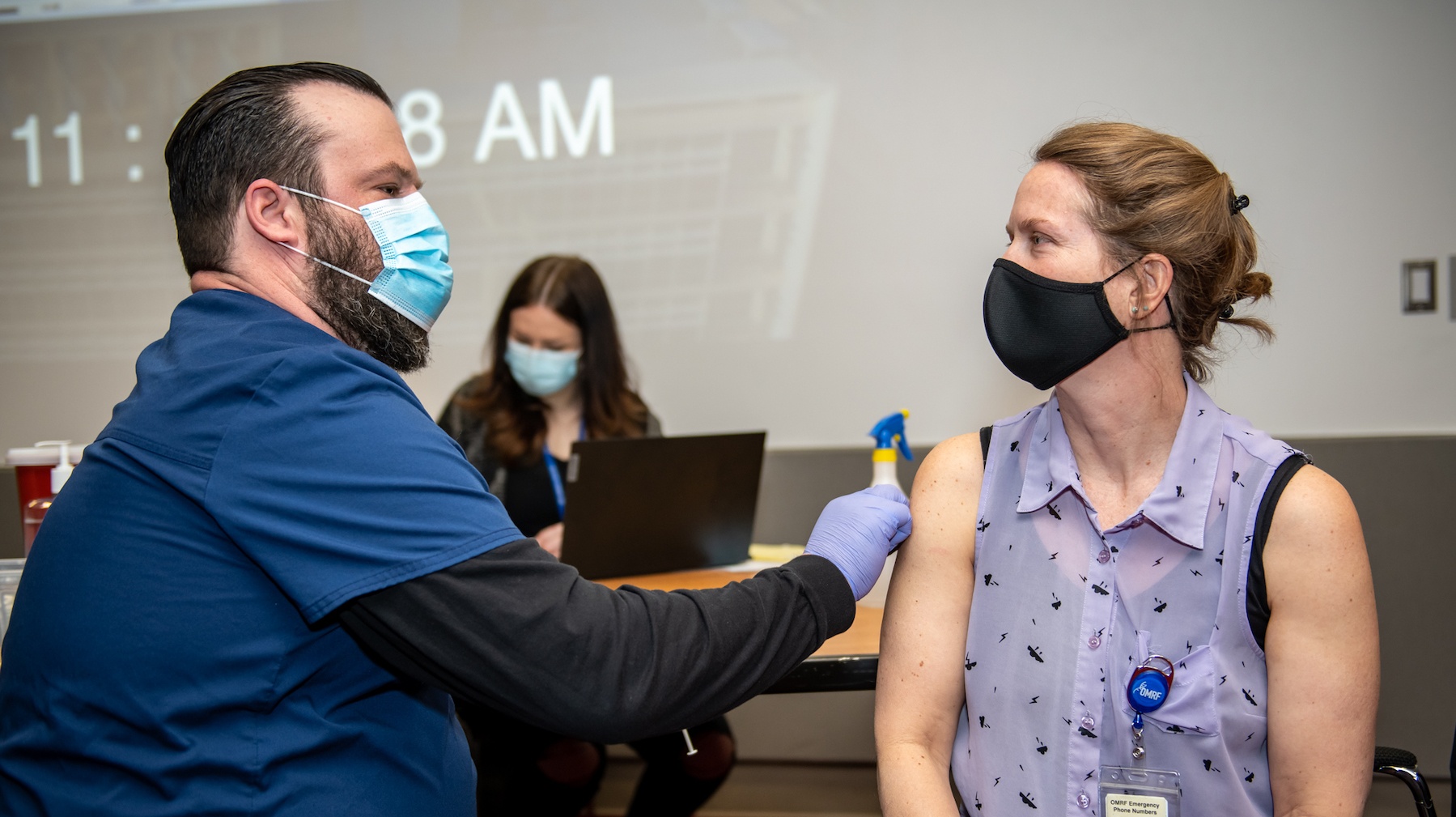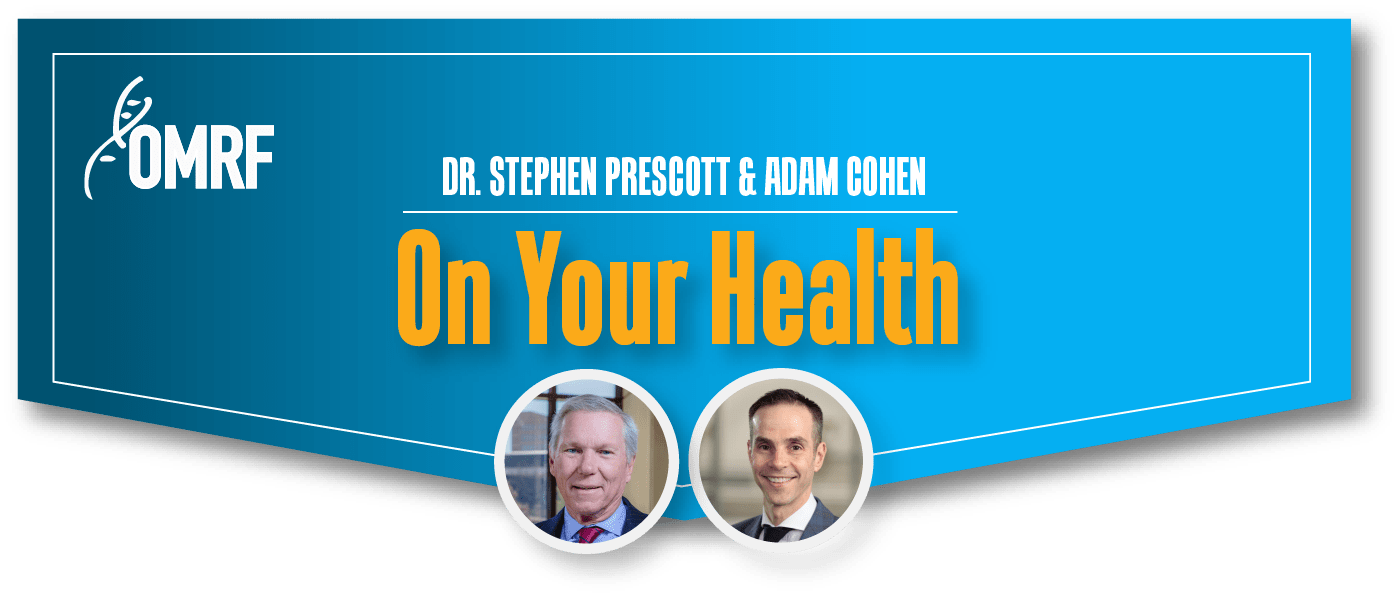Tuesday was a happy day at the Oklahoma Medical Research Foundation.
Starting bright and early that morning, OMRF hosted a Covid-19 vaccine clinic for employees.
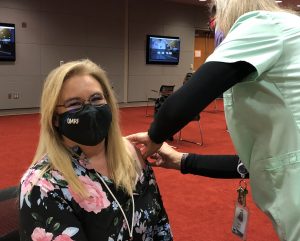
“I’m excited,” said Stephanie Mode, a manager in our accounting department who’d just received her first dose of the Pfizer vaccine. “It’s difficult to get an appointment nearby through the state portal, so I feel fortunate that OMRF is providing us with the chance to get our shots.”
With Oklahoma now in the third phase of the state’s vaccination plan, all employees of OMRF became eligible for vaccination as essential workers. Like other employers in the state, we decided the best way to protect our workforce would be to bring vaccinations to them. It’s the same strategy we use each year for flu shots.
We wrestled with the idea of mandating Covid-19 shots. The U.S. Equal Employment Opportunity Commission has said it’s legal for employers to require that their workforce get vaccinated, so long as mandates allow for health and religious exemptions.
But compulsory vaccination seemed ill-suited for the culture of OMRF. As an organization, we are more like an artists’ colony than we are a single, centralized business. We give our scientists tremendous freedoms to chart their own courses, both in the research topics they choose to investigate and how they run their individual labs.
That vein of free-thinking individualism runs strong through our entire organization. We don’t mandate flu shots. Nor do we demand that employees stop smoking or take steps to manage chronic health conditions to receive the same health insurance rates as their peers. We don’t require people to make their own retirement contributions to receive their share from OMRF.
In short, we’re a place that allows people to decide for themselves, even if some of those choices can have downstream negative effects, both for themselves and others at OMRF. We do our best to educate our workforce to make decisions we believe are in their best interests. But in the end, we give our employees choices.
In that context, a mandate, even in the midst of an unprecedented pandemic, didn’t feel right. This was especially true because the three currently available vaccines have only received emergency use authorization from the Food and Drug Administration. That expedited approval process has heightened reluctance among a significant portion of the American public, many of whom already harbored some degree of vaccine skepticism.
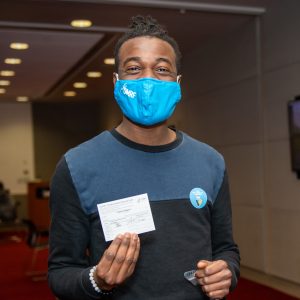
At least for now, OMRF has opted to go with a strategy of strongly encouraging our employees to get vaccinated. And so far, that approach is showing some success.
We created a portal that allowed employees and affiliates to voluntarily report when they’d been vaccinated. By Monday, about 200 had told us they’d received at least one dose of a vaccine, with those who hadn’t completed their regimen scheduled to do so in the next few weeks. At our clinic, we vaccinated almost another 150 members of the OMRF team, and we’ll give them all their second doses in early April.
That means we’ll have at least 350 or so members of our workforce vaccinated by a few days after Easter. Our full onsite population is about 500 people (420 full-time employees, plus about 80 part-timers, graduate students and other affiliates who regularly come on campus). So, at a minimum, we’ll be looking at about a 70% vaccination rate.
The good news is that 70% is the threshold many experts are citing for herd immunity. The bad news is that if we can only get to a 70% vaccination rate in a workplace populated by people dedicated to studying and treating human disease, how will we ever reach that level in the general population?
At OMRF, there are probably folks who’ve been vaccinated who haven’t reported it to us. We’re also hoping that over time, more people will receive shots as vaccines become more widely available, tiered eligibility ends, and those who have concerns about the vaccines see friends, coworkers and family members receive them without suffering any ill effects.
That final part, said Dr. Eliza Chakravarty, is crucial.
Dr. Chakravarty is an immunologist and rheumatologist at OMRF, and she has been overseeing our weekly vaccine clinics for patients and, on Tuesday, employees. Happily, she said, only once during the clinics has anyone suffered any sort of adverse reaction, and that minor episode was remedied quickly with a dose of Benadryl.
Discussing the “incredibly low” rate of side effects, which has been documented in large-scale studies, has helped her allay the worries of patients who were initially reluctant to take the vaccine. “After we talked about their concerns, most were willing to take the vaccine,” said Chakravarty.
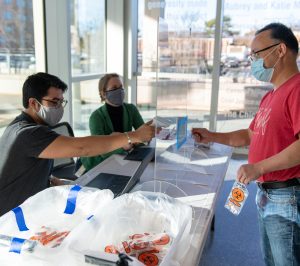
Getting shots into as many arms as possible will be key to returning our workplaces to some semblance of what they looked like a year ago. But until we have high levels of vaccination and low levels of disease in the community, OMRF will stay conservative.
That means maintaining masking requirements and, when possible, remote work arrangements and staggered shifts. We’ll also continue performing weekly PCR testing of onsite staff.
Those measures and other onsite precautions have helped Stephanie Mode feel safe at OMRF throughout the pandemic. Her comfort level will be better after she receives her second shot, she said, “but I’m going to keep wearing a mask.”
Mode doesn’t see the shots bringing big changes to her work or personal life. However, if her two daughters can get vaccinated in the coming months, she has her eye on a “girls’ trip” in May to the beach in Gulf Shores, Alabama.
“One of my daughters turned 21, and the other is going to graduate from high school,” said Mode. With twin milestones and the end of a pandemic year, she said, “It will be really special.”
__
Dr. Stephen Prescott is president of the Oklahoma Medical Research Foundation, and Adam Cohen is OMRF’s senior vice president and general counsel. They can be reached at omrf-president@omrf.org. Get On Your Health delivered to your inbox each Sunday — sign up here.
